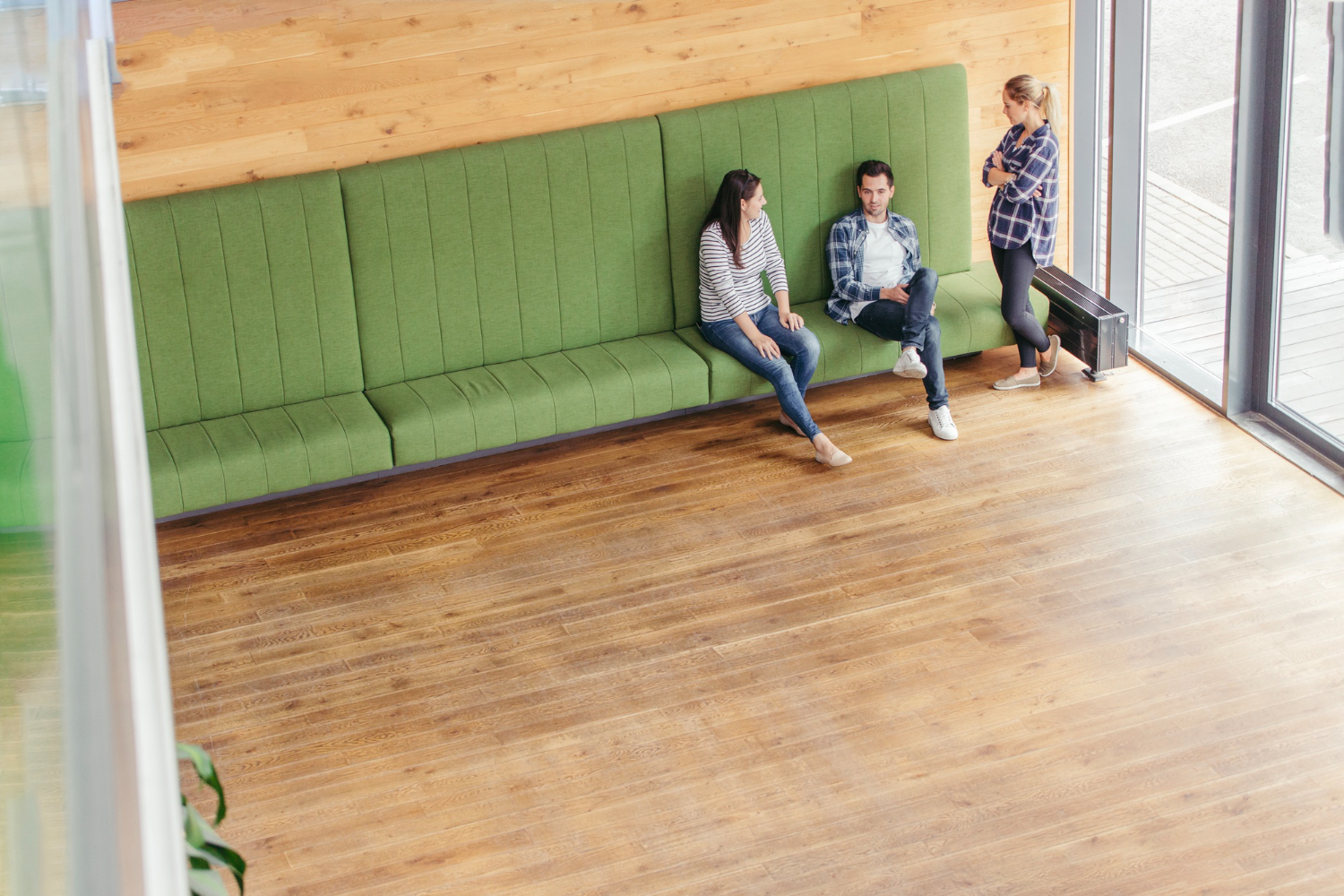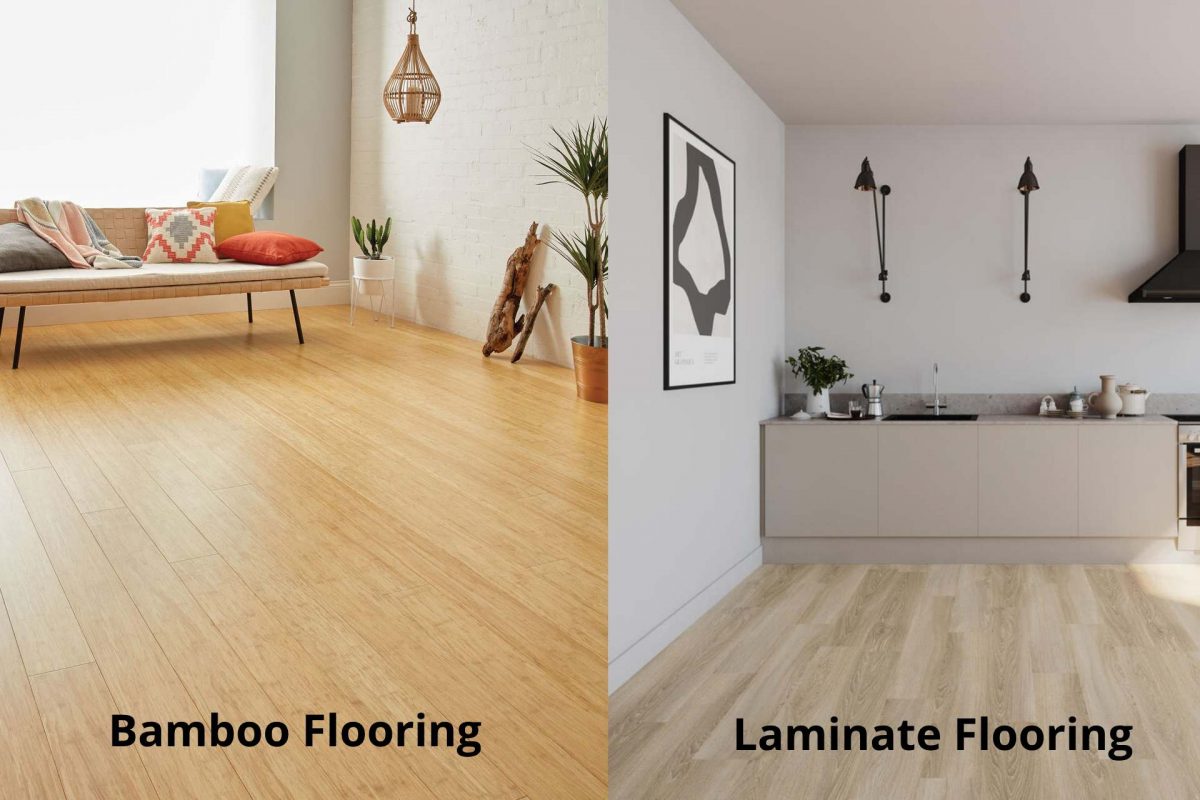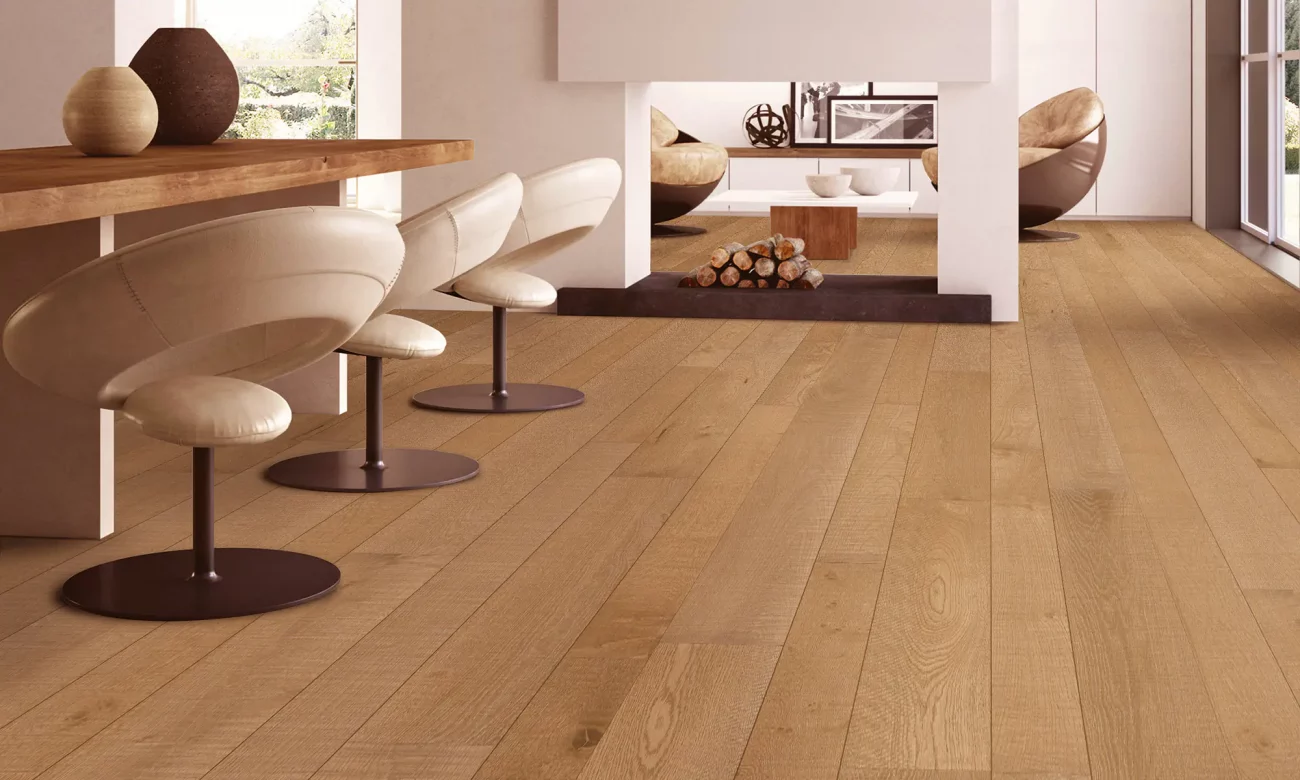Laminate and engineered hardwood are two popular flooring options that offer a balance between aesthetics, durability, and cost-effectiveness. While they may resemble solid hardwood, they are distinct in terms of construction, installation, and maintenance. In this comprehensive comparison, we will delve into the differences between laminate and engineered hardwood flooring in great detail, covering aspects such as materials, installation methods, durability, maintenance, aesthetics, and cost.
Material Composition
Laminate Flooring
Laminate flooring is constructed primarily from synthetic materials. Its core consists of high-density fiberboard (HDF) or particleboard, often made from recycled wood fibers. This core is then topped with a high-resolution image of wood grain, stone, or tile, which is protected by a clear, durable wear layer. The layers are fused together using heat and pressure, creating a stable and rigid product.
Engineered Hardwood Flooring
Engineered hardwood, on the other hand, contains a real wood veneer or lamella as its top layer, typically ranging from 0.6 to 6 millimeters in thickness. Beneath the veneer, multiple layers of plywood, high-density fiberboard, or hardwood are stacked in a cross-grain configuration. This cross-grain construction imparts greater stability to the flooring.

Installation
Laminate Flooring
Laminate flooring is known for its ease of installation, making it a popular choice for DIY enthusiasts. Most laminate products feature a click-and-lock or tongue-and-groove system that allows the planks to fit together without the need for glue or nails. Laminate can be installed as a floating floor, which means it is not affixed to the subfloor. This floating installation method makes it possible to install laminate over existing flooring, like vinyl or tile.
Engineered Hardwood Flooring
Engineered hardwood flooring can be installed in various ways, including the traditional nail-down method, the glue-down method, or as a floating floor. The installation method depends on the specific product and the subfloor. Some engineered hardwoods are designed for easy installation with a click-and-lock system, similar to laminate. Others may require a more professional installation due to their thickness and stability demands.

Durability and Longevity
Laminate Flooring
Laminate flooring is known for its durability. The wear layer on the surface is highly resistant to scratches, dents, and stains, making it an ideal choice for high-traffic areas. However, it is not immune to damage from sharp objects or excessive moisture. Laminate has an average lifespan of 15-25 years, depending on the quality of the product and the level of foot traffic.
Engineered Hardwood Flooring
Engineered hardwood is more durable than solid hardwood due to its layered construction. It can withstand some moisture and temperature fluctuations, making it suitable for areas like basements and kitchens where solid hardwood might not be recommended. The lifespan of engineered hardwood can vary, but it generally ranges from 20 to 75 years or more, depending on the thickness of the wear layer and the overall quality of the product.

Maintenance
Laminate Flooring
Laminate flooring is relatively easy to maintain. Regular sweeping and occasional damp mopping are usually sufficient to keep it clean. However, because of its susceptibility to moisture damage, it’s essential to wipe up spills promptly and avoid excessive water use during cleaning. Laminate is not as easy to repair as hardwood, and damaged planks often need to be replaced rather than refinished.
Engineered Hardwood Flooring
Maintaining engineered hardwood is similar to solid hardwood. Sweeping or vacuuming to remove dirt and debris is essential. Occasional cleaning with a hardwood floor cleaner is recommended. Engineered hardwood can be refinished a limited number of times, depending on the thickness of the wear layer, which is typically thinner than that of solid hardwood. This makes it less forgiving of deep scratches and dents.

Aesthetics
Laminate Flooring
Laminate flooring has come a long way in terms of aesthetics. High-quality laminates can convincingly mimic the appearance of wood, stone, or tile. They are available in a wide range of colors and styles, allowing homeowners to achieve their desired look. However, some people may still be able to distinguish the difference between laminate and real wood upon closer inspection.
Engineered Hardwood Flooring
Engineered hardwood boasts the natural beauty of real wood, which lends a timeless and authentic feel to your space. The genuine wood veneer means that each plank can exhibit unique grain patterns and color variations. It is an excellent choice if you want the warmth and elegance of hardwood but with added stability and versatility.
Cost
Laminate Flooring
Laminate flooring is generally more budget-friendly than engineered hardwood. The cost of laminate can vary significantly depending on the quality, brand, and style. On average, you can expect to pay between $1 to $4 per square foot for laminate flooring, making it an attractive option for those on a tighter budget.
Engineered Hardwood Flooring
Engineered hardwood is a bit more expensive than laminate but more affordable than solid hardwood. The price of engineered hardwood varies based on factors such as wood species, thickness, and finish. It typically ranges from $3 to $12 per square foot, with some premium options exceeding this range. While it’s pricier than laminate, it offers a genuine wood look and added longevity.
Environmental Impact
Laminate Flooring
Laminate flooring, with its composite wood core, may contain adhesives and chemicals that can emit volatile organic compounds (VOCs). While many laminate manufacturers have taken steps to reduce these emissions, it’s essential to check for products that meet low-VOC or eco-friendly standards if you are concerned about indoor air quality and sustainability.
Engineered Hardwood Flooring
Engineered hardwood can be a more sustainable choice compared to laminate. It typically uses real wood for the top layer, reducing the need for cutting down entire trees. Additionally, some engineered hardwoods are produced using sustainable harvesting practices and adhesives with lower VOC emissions. If environmental considerations are a priority, you can find engineered hardwood options that are certified by organizations like the Forest Stewardship Council (FSC).
Conclusion
In summary, laminate and engineered hardwood flooring have their unique characteristics and are suitable for different situations. The choice between the two largely depends on your specific needs and preferences.
Choose laminate flooring if:
- You’re on a tight budget.
- You need an easy DIY installation.
- You want a highly durable and scratch-resistant surface.
- You prefer a wide variety of styles and colors.
Choose engineered hardwood flooring if:
- You want the natural beauty and warmth of real wood.
- You’re willing to invest a bit more for added durability and longevity.
- You need a stable flooring option that can handle moisture and temperature fluctuations.
- You are concerned about environmental sustainability and indoor air quality.
Ultimately, the Difference between laminate and engineered hardwood should be based on your lifestyle, budget, aesthetic preferences, and the specific requirements of your space. Both options offer benefits and drawbacks, so it






